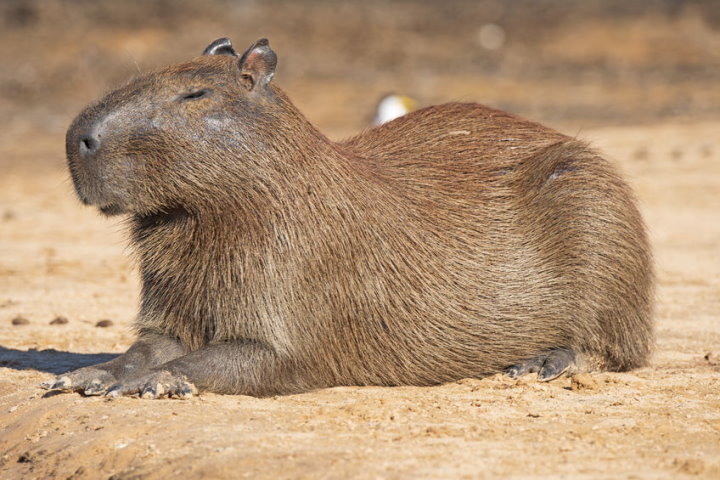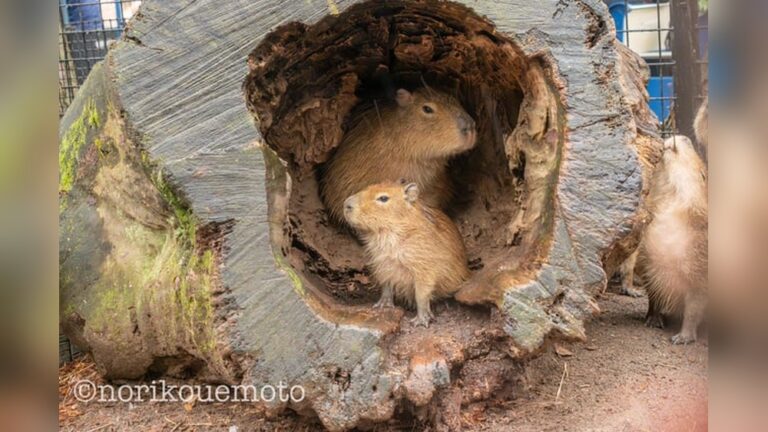How Long Do Capybaras Live: Surprising Lifespan Facts Revealed
Have you ever wondered how long capybaras live? These gentle giants are fascinating creatures, and knowing their lifespan can help you understand them better—whether you’re curious, thinking about caring for one, or just love learning about animals.
You’ll discover the surprising facts about capybara lifespans and what affects how long they live. Keep reading to uncover everything you need to know about these unique animals and their time on earth.
Capybara Lifespan Basics
Capybaras are fascinating creatures with unique life patterns. Understanding their lifespan helps us appreciate their role in nature. Their life duration varies based on environment and care. Here are the basics of capybara lifespan.
Average Lifespan In The Wild
In the wild, capybaras live about 6 to 10 years. Predators and natural dangers reduce their lifespan. Food availability also affects how long they live. Wild capybaras face many challenges daily.
Lifespan In Captivity
Captive capybaras often live longer than wild ones. They can live up to 12 years or more. Regular food, medical care, and safety boost their longevity. Captivity provides a controlled and safe environment.
Factors Affecting Longevity
Several factors impact capybara lifespan. Diet, habitat, and stress levels play key roles. Disease and injuries also influence their survival. Proper care helps captive capybaras live longer. In the wild, threats like predators shorten life.

Credit: www.savacations.com
Habitat And Its Role
Capybaras live in places that shape how long they survive. Their home affects their health, safety, and food supply. Understanding their habitat helps explain their life span.
Capybaras need water and land to thrive. They live near rivers, lakes, and swamps. These areas provide food and shelter from danger.
Natural Environment Impact
Capybaras depend on wetlands for food and safety. These areas offer grasses and plants to eat. Water bodies help them escape predators quickly. Clean water and rich plants support longer lives. Changes in the environment can stress capybaras. Too much heat or drought lowers their survival chances.
Threats In The Wild
Wild capybaras face many dangers daily. Predators like jaguars and anacondas hunt them. Disease can spread quickly in groups. Extreme weather like floods or dry spells harms them. Loss of habitat means less food and shelter. These threats reduce their life expectancy in nature.
Human Influence On Lifespan
Humans affect capybara lives in good and bad ways. Hunting lowers their numbers in some places. Pollution spoils water and plants they rely on. Farms and cities shrink their homes. Some people protect capybaras and their habitat. In captivity, capybaras often live longer due to care. Human actions play a big role in their survival.
Diet And Health
Capybaras have unique diet and health needs that affect their lifespan. Their eating habits support their energy and overall well-being. Understanding these needs helps in caring for them properly. Health also depends on diet quality and living conditions. Good nutrition keeps capybaras active and strong.
Typical Diet In The Wild
Capybaras mainly eat grasses and aquatic plants. They enjoy fresh leaves, fruits, and bark. Their diet is high in fiber. This helps their digestion and keeps their teeth healthy. They also drink plenty of water from rivers and lakes. Wild capybaras eat small amounts of algae too. This diet fits their natural habitat and lifestyle.
Nutritional Needs In Captivity
Captive capybaras need a diet similar to the wild. Fresh grass, hay, and leafy greens are essential. Fruits like melons and apples can be given in small amounts. Providing clean water is very important. Avoid foods high in sugar or fat. Proper diet supports their health and longevity in captivity. Supplements may be needed to meet all nutrients.
Common Health Issues
Capybaras can suffer from dental problems if diet lacks fiber. Obesity can occur with poor feeding habits. Parasites and skin infections are common in bad conditions. Stress and lack of exercise reduce their immunity. Regular vet checks help catch problems early. Clean habitats and proper diet reduce health risks.

Credit: en.wikipedia.org
Reproduction And Lifespan
Capybaras have a unique way of living and reproducing. Their lifespan and how they raise their young are closely linked. Understanding their breeding habits helps explain how long they live. Their reproduction affects their survival as a species.
Capybaras reproduce in cycles and reach breeding age at certain times. The survival of their babies depends on many factors. How parents care for their young also changes their life expectancy.
Breeding Age And Cycle
Capybaras become adults at about 18 months old. They can breed soon after. Their breeding season varies but often happens in the rainy months. Females usually give birth once a year. Each pregnancy lasts around 150 days. This cycle helps keep their population steady.
Offspring Survival Rates
Newborn capybaras face many dangers. Predators and harsh weather reduce their numbers. About half of the babies survive their first year. Strong groups protect the young better. Survival rates impact how many capybaras reach adulthood.
Parental Care Impact
Capybara parents watch over their young carefully. Mothers nurse and groom their babies. Fathers and other group members also help. This care improves survival chances. Better care often leads to longer lives for capybaras.
Comparison With Similar Rodents
Capybaras are large rodents that live in South America. They share many traits with other big rodents, but their lifespan and habits differ. Comparing capybaras to similar rodents helps us understand their unique qualities better.
This comparison shows how capybaras stand out in the rodent world. It also highlights the different lifespans and special features of these animals.
Lifespan Of Other Large Rodents
Capybaras usually live 8 to 10 years in the wild. Some can reach up to 12 years in captivity. Other large rodents have varying lifespans. For example, beavers live about 10 to 12 years. Nutrias, another big rodent, live around 5 to 7 years. Guinea pigs live shorter lives, about 4 to 6 years. These differences show how capybaras have a medium to long life span among large rodents.
Unique Traits Of Capybaras
Capybaras are social animals. They live in groups of 10 to 20 members. This social lifestyle helps them survive longer. Capybaras are also semi-aquatic. They swim well and spend much time in water. This behavior protects them from predators. Their teeth grow continuously, just like other rodents, but their strong jaws help them chew tough plants. These traits help capybaras adapt and live longer in the wild.
What Sets Capybaras Apart
Capybaras are the largest rodents on Earth. Their size alone makes them unique. They have webbed feet for swimming, unlike most rodents. Their calm and gentle nature makes them less aggressive. This helps in group living. Their adaptability to land and water habitats is rare among rodents. These special features influence their lifespan and survival. Capybaras’ combination of size, social life, and habitat makes them different from other rodents.
Tips To Extend Capybara Lifespan
Extending the life of a capybara requires care and attention to their needs. Proper care helps them live longer and stay healthy. Focus on their home, health, and regular checkups. These tips make a big difference for your pet capybara’s lifespan.
Understanding what capybaras need every day is key. A good environment, watching their health, and taking steps to stop illness can help them live many years.
Optimal Living Conditions
Capybaras need a warm and safe place to live. Their space should have clean water for swimming. They enjoy grassy areas to graze and rest. Keep their home quiet and free from stress. Good shelter protects them from cold and rain. Regular cleaning helps avoid diseases. A large, natural space makes capybaras happier and healthier.
Health Monitoring
Watch your capybara for any signs of sickness. Check their eyes, nose, and skin often. Notice changes in eating or behavior. Early detection of illness helps avoid serious problems. Keep a log of their weight and activity. Regular observation keeps them strong and active. Quick action saves lives and improves recovery.
Preventive Care Practices
Vaccinate your capybara to prevent common diseases. Use flea and tick control to avoid parasites. Feed a balanced diet with fresh vegetables and grass. Avoid foods that can harm their stomach. Provide clean water every day. Schedule regular vet visits for checkups. Preventive care stops health issues before they start.

Credit: worldrainforests.com
How Smart Pets Lover Can Help You with How Long Do Capybaras Live
Practical Learning from Understanding Capybara Lifespan
When we explore how long capybaras live, it opens up valuable lessons about their habitat, diet, and overall health—key factors that directly impact their lifespan. Observing their natural environment helps us appreciate the importance of space and water access, reminding pet parents that replicating such conditions is essential for a happy, healthy capybara. Likewise, understanding their diet encourages us to prioritize balanced nutrition, much like with our dogs or cats, ensuring longevity and vitality.
At Smart Pets Lover, we believe these insights go beyond facts—they guide responsible care and deepen the bond with these gentle creatures. For anyone curious about capybaras or other pets, connecting with knowledgeable communities or professionals can offer ongoing support and practical tips. Feel free to reach out to local exotic animal specialists or veterinary experts who can provide tailored advice based on your pet’s unique needs.
Ultimately, learning about capybara lifespan isn’t just about numbers; it’s about embracing a lifestyle that honors their natural rhythms and well-being, inspiring every pet parent to nurture their companions with confidence and warmth.
Frequently Asked Questions
How Long Do Capybaras Live In The Wild?
Capybaras live about 6 to 10 years in the wild. Predators and environmental factors often limit their lifespan.
What Is The Lifespan Of Pet Capybaras?
Pet capybaras generally live 8 to 12 years with proper care. They benefit from a safe, clean environment and good diet.
Do Capybaras Live Longer In Captivity?
Yes, capybaras tend to live longer in captivity, often reaching 10 to 12 years. Regular food and veterinary care help extend their life.
What Factors Affect Capybara Lifespan?
Diet, habitat, predators, and health care strongly affect capybara lifespan. Stress and injuries can also shorten their life.
Conclusion
Capybaras usually live between 8 and 10 years in the wild. In safe places, like zoos, they can live longer. Their lifespan depends on food, shelter, and predators. Taking care of their health helps them live well. These gentle animals enjoy calm environments and good water sources.
Knowing their lifespan helps us understand their needs better. Capybaras remind us how important nature and care are. Watching them live happily shows the value of a healthy habitat.







